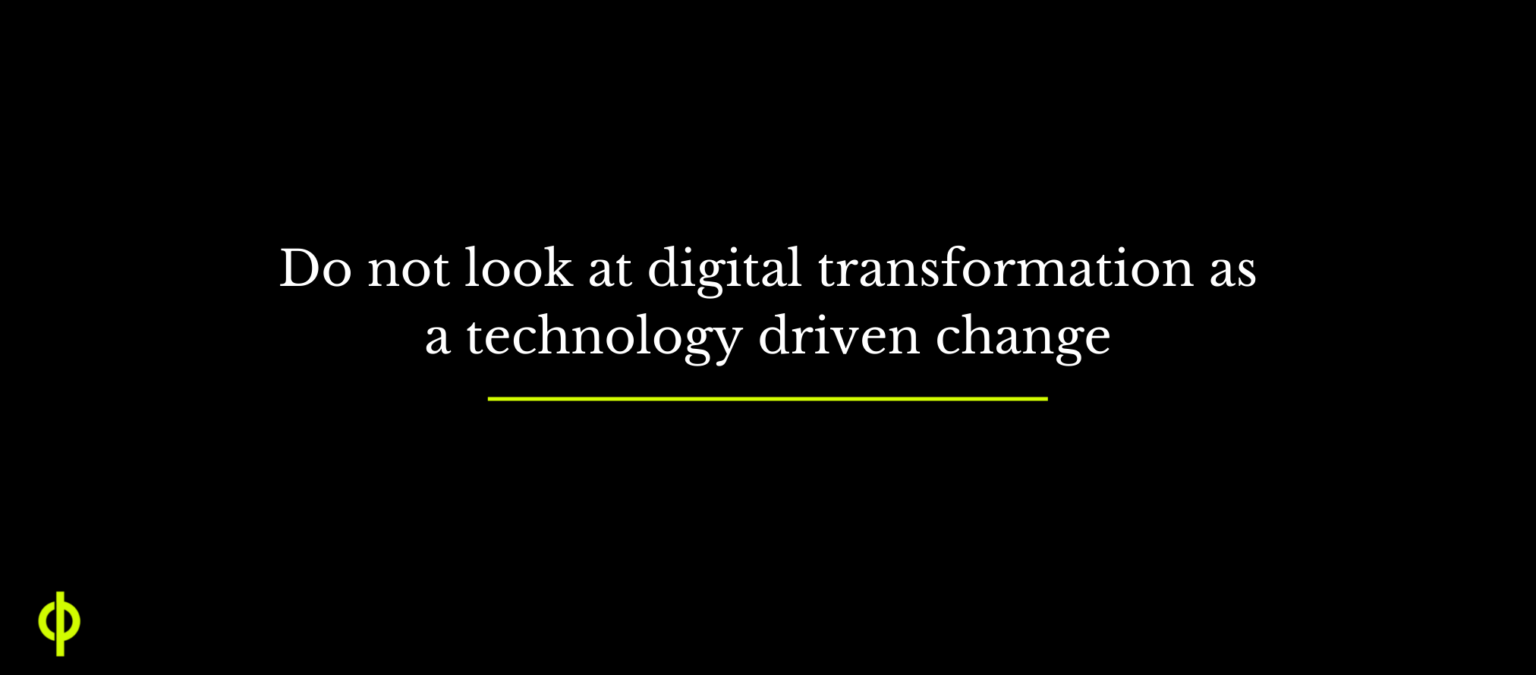
More than changes in technology, it is the innovations in the overall business model, products and business processes that will have a lasting and meaningful impact for companies that are looking at digitalisation to meet new challenges.
Digital transformation itself is aptly defined as “Reimagining of business in the digital age”. Change is primarily in the creation or alteration of, say, your manufacturing operations, or your retail customer’s shopping experience or your business culture and style. So, mapping your digital transformation strategy is most important. The biggest mistake you can make is to fall for shiny promises that surround new technologies. The attention to the technology side of the transformation process can come later.
First, look at innovation required in your business model, operational processes and customer experiences. Don’t just follow the Tech hype. Make sure that Change will leave a lasting impression on how you do your business.
Put in simple terms, you need to envision technology in the right context, and understand what measurable changes it can bring to your business. Look closely at these three changes in your business.
1.Transforming Business Models
This could even mean redefining the boundaries and activities of your firm. It could be digitally modifying your business, or adding a new digital line of business or simply using digital capability to access a wider market globally.
Examples are several. A sportswear company diversifying into digital devices that track and report on the workout, a grocery store developing an app that enables customers to pre-order, a super market chain introducing self check out to reduce human contact, an apparel company using digital design-sharing with production partners and avoiding having to frequently ship prototypes back and forth, a software company going global by changing its nature of business into a licensing model with a digital support network, and so on.
2.Transforming Internal Processes
Companies reap huge benefits by automation that usually results in freeing human resources that can then be utilized for more strategic tasks. It often enables a refocus on creativity and superior management by leaving repetitive efforts to the automated process. A typical example is of a manufacturing concern adopting Vision-enabled Artificial Intelligence to increase productivity by automating an Inspection Line.
Worker enablement is another visible mode of transformation. We all are aware of how Work from Home has altered the very fabric of individual and collaborative work. Rest assured that we have hardly seen the last of this transformation. Companies will certainly be looking for collaborative and networking tools that enhance both individual outputs as well knowledge sharing. Decision making at the top will also be benefited by being more informed.
3.Transforming Customer Experiences
This is the most exciting aspect of Transformation. Companies are finding that the two most important topics are What makes a Customer happy, and What leads to his dissatisfaction.
Building analytical abilities in understanding customers in more detail is now seen as a guiding light for brand loyalty, targeted promotions, market segmented pricing and several other marketing elements that lead to personalized sales and service. Perhaps the area that can be best served by digital initiatives is Customer after-sales service. The use of social media, messaging apps and other digital tools is changing the face of customer touch points.
Digital Technology
Once you are clear on what parts of your business need change and what will drive the changes in the three major aspects of your business, as above, you will be able to gauge how and which technologies can help you. A good digital transformation partner will also be able to help identify new ways to take advantage of the digital era.
Digital Technology will give you the best opportunities to change; not necessarily in all the areas at once, but one by one. However, the success of digital transformation projects depends not only on investing in the right technologies, but also also on the parallel organizational changes that are required for these technologies to be used effectively. Managing the transformation is also a major challenge, particularly for the not-so-large enterprises.
Whoever said that Digital Transformation is similar to conducting an orchestra rather than just buying the latest instruments hit the nail right on its head. If you want Digitalisation to be truly transformative, stay focused on the impacts it is making on your business and not just on the marvels of technology.